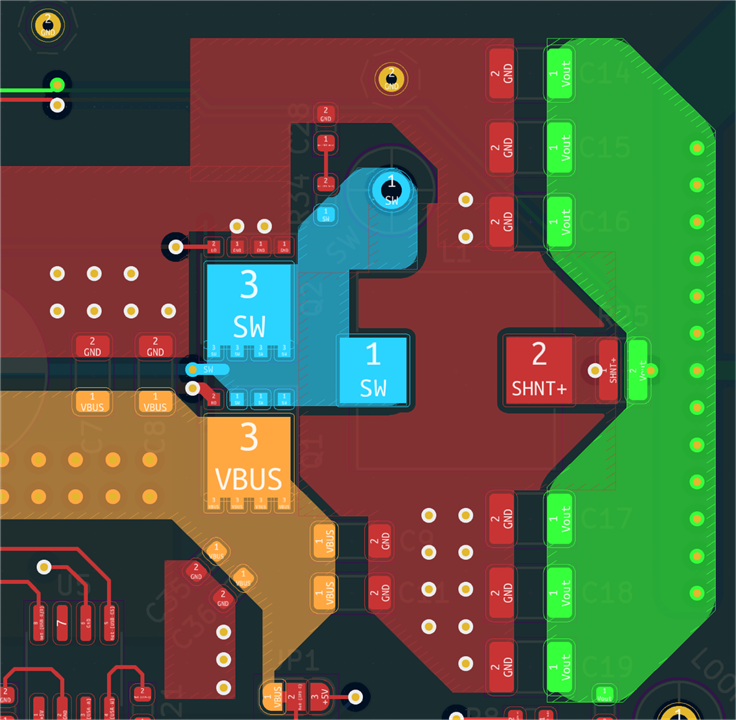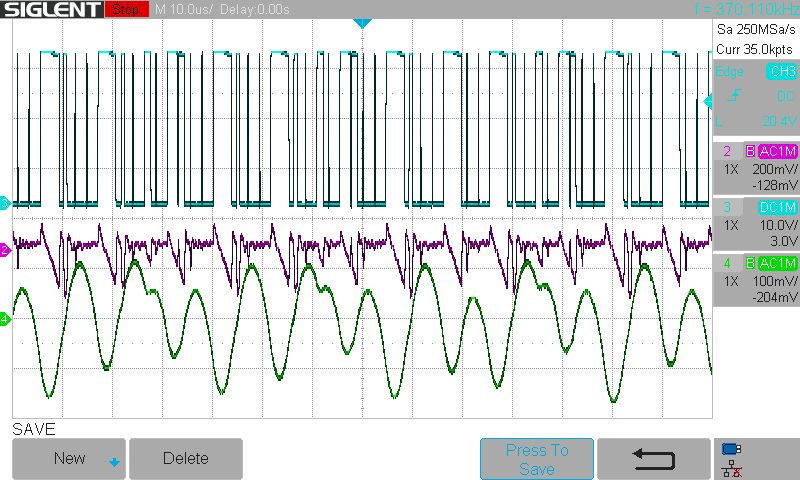Other Parts Discussed in Thread: LM5148
I am developing a power converter based on the LM25148. I made a post here two weeks ago about stubborn instability. That thread found I had not followed all layout guidelines for the chip, so I went back to the design and re-fabbed the boards. Unfortunately, the behavior did not go away and in some ways has become worse. The main symptom is oscillation of the output voltage and inconsistent switching pulse width. The shot below shows the SW node in blue, inductor current in pink, and output voltage in green.

At low loads the converter operates as expected, there seems to be no problem while the converter is in DCM (maybe this isn't the right term since I've enabled FPWM, but it works fine when the average inductor current is less than half of the ripple current). Then it oscillates as shown above, for me between a load of 700mA and 3.5A. Once the load increases above 3.5A it returns to stable operation as shown below.
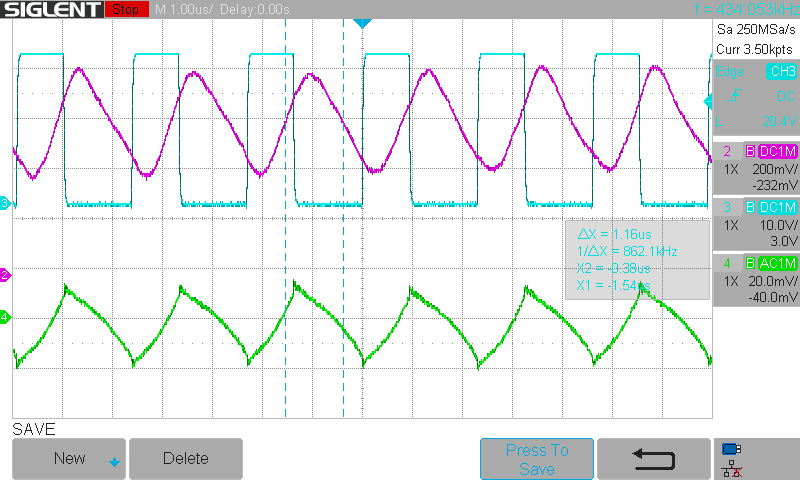
I have attached my design calculator for reference. Assuming I had a subharmonic oscillation or noise problem I have tried to systematically eliminate possible causes. The thing I have tried the most is adjusting the compensation network. I have tried higher crossover frequencies, lower crossover frequencies, higher phase and gain margins, recalculating with different output filter assumptions, and just blind component adjustments. Some configurations are definitely worse; leading to completely useless output, but most of the calculated values give indistinguishable results.
One additional observation is that the instability exhibits some sort of hysteresis. When the load is reduced to nothing from 4A, the no-load state is no longer operating as expected.
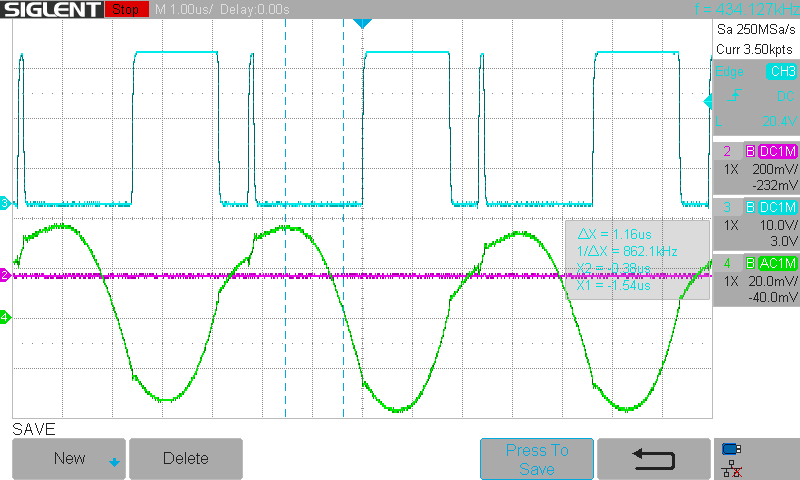
This is fixed by power cycling the device, which causes it to return to normal.
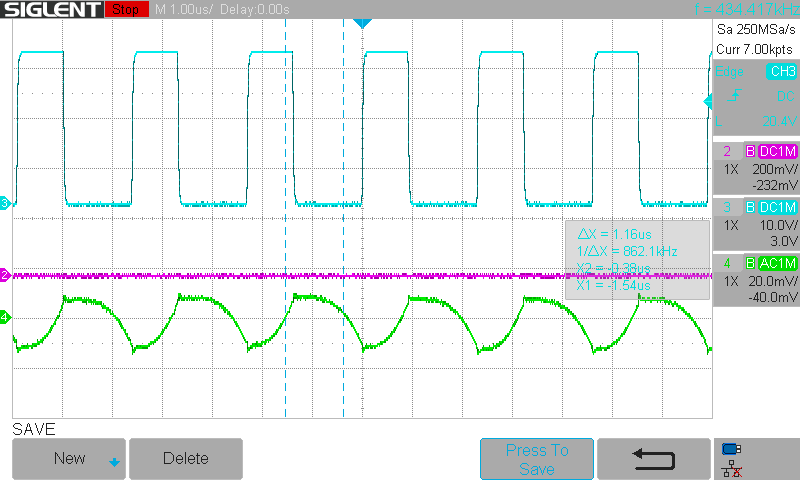
Since I could not adjust the compensation values to fix this problem, I tried adjusting many other things.
I adjusted the output filter, using 2.2uH, 4.7uH, 6.8uH, 8.2uH, and 10uH. None of them altered the behavior significantly besides changing what load ranges were stable. Lower value inductors had higher ripple current and stayed stable at a larger range of low currents.
I removed my feedback network and tied FB to VDDA through a 100k resistor, setting the output to a fixed 12v. This did not change the behavior and I believe eliminates the possibility of noise on my FB network being the culprit.
I added a few different filters between the ISNS+ and Vout pins close to the LM25148 chip. These had no effect.
I switched to internal compensation which was worse than all my external attempts.
Are there relationships I can investigate or nets I can probe that would give insight to this issue? I do not have experience with peak mode current control before this design and I fear I'm missing something.




